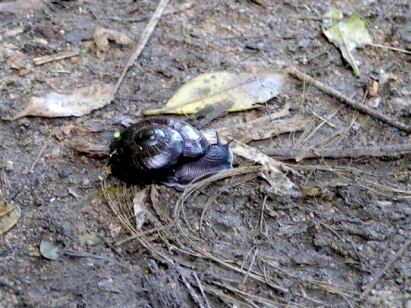There’s a great post up on The Atavism by David Winter where he explains why the shape of the snail’s shell is a logarithmic spiral. What I find interesting is that the shell has the logarithmic spiral shape under two assumptions:
- The radius of the shell increases exponentially as the snail ages (i.e., the rate of radial growth is proportional to the shell radius) and,
- The angle between the centre of the snail and the end of the shell changes at a constant rate – like the second hand of a clock which moves at a constant rate of 360-degrees per minute.
I was hoping that we could use this simple model to do a couple of quick experiments.
Firstly, can we validate the hypothesis that snail shells are logarithmic spirals using something like a Turing test?
That is, among a set of spirals are blog-readers going to pick out the logarithmic spiral as being snail-like?
Secondly, since the art of model derivation is subjective, I want to solicit opinions on this particular model derivation – to see if everyone has the same instinctive appraisal of model assumptions or if there are a range of different tastes on the matter.
… and after you’ve voted be sure to go check out The Atavism for a nice explanation and some great snail pictures!



The snail belongs to the Powelliphanta group of snails. It is found in Kahuranga National Park, Tasman NZ. It is a carnivorvous land snail that lives on the native worms of the region.